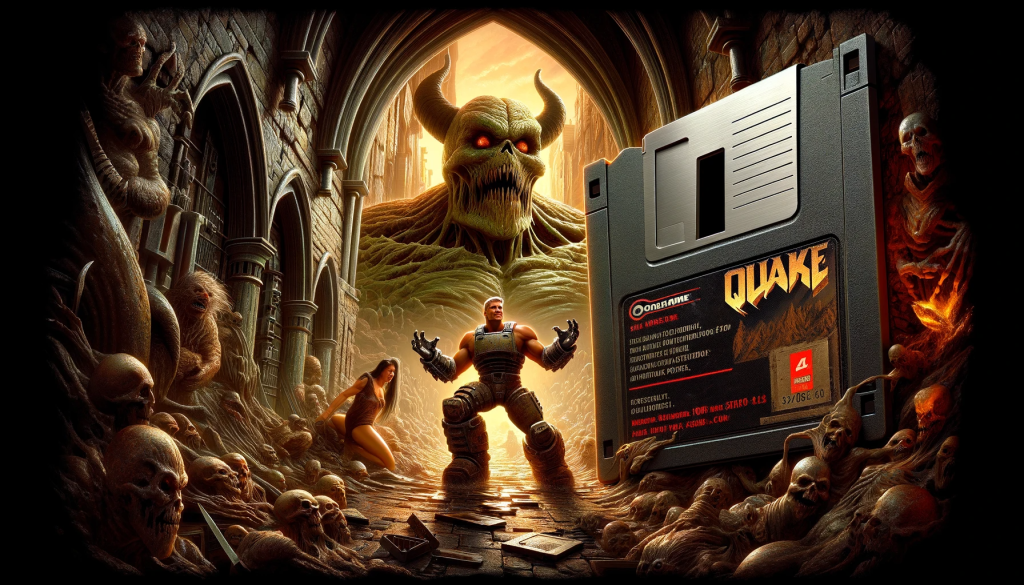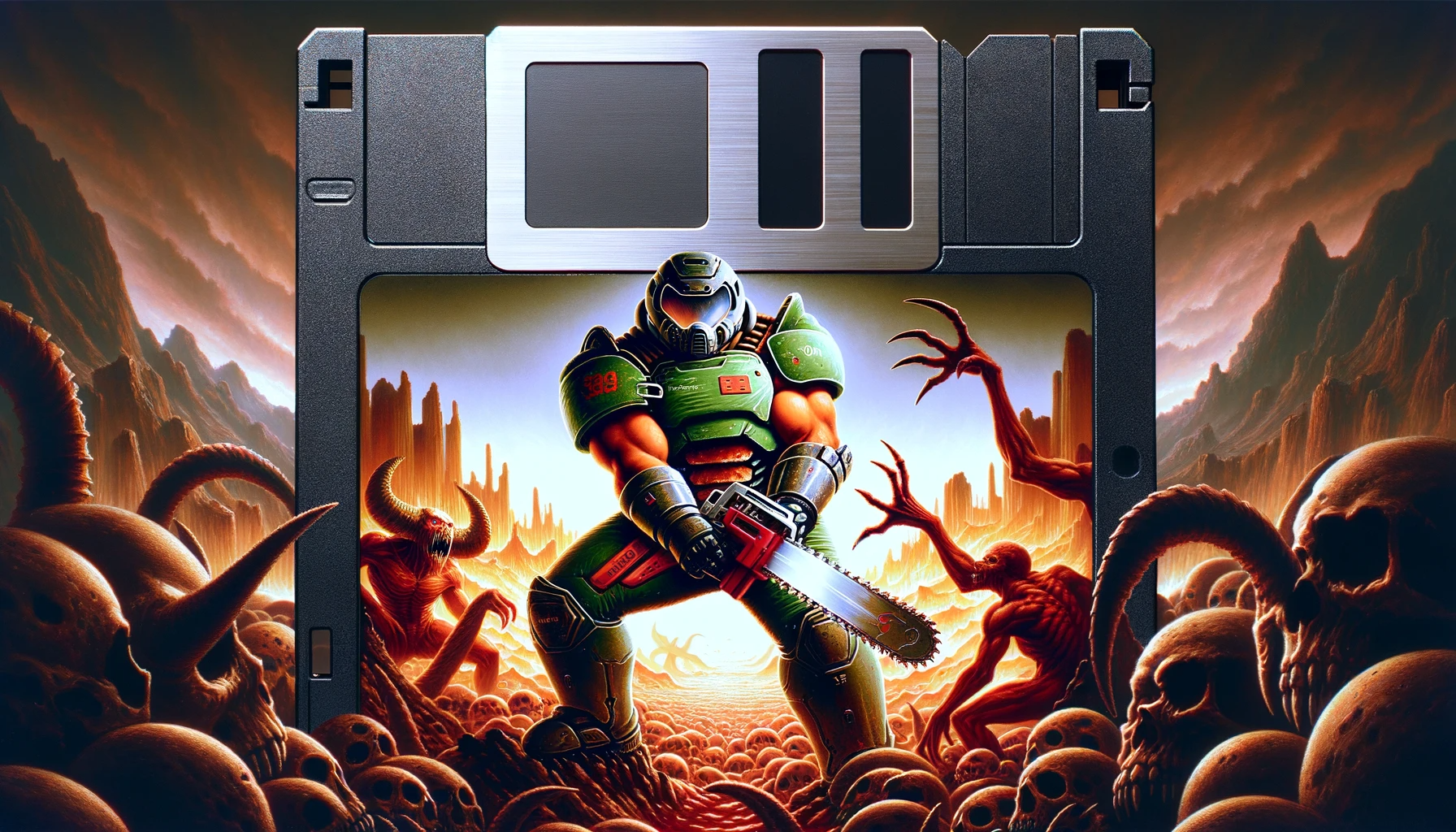Doom’s release in 1993 was a watershed moment in gaming history. The game’s innovative use of 3D graphics, immersive gameplay, and ground-breaking technology set new standards in the industry. However, it was the strategic use of shareware that truly catapulted Doom to unprecedented levels of popularity and influence.
A Brief History of Shareware
Shareware, a unique software distribution model, has a rich history that dates back to the early days of personal computing. It emerged in the 1980s as a response to the growing demand for software and the need for a more flexible and accessible distribution method.
The concept of shareware was simple yet revolutionary. Developers would distribute a portion of their software for free, allowing users to try it before deciding to purchase the full version. This method stood in stark contrast to the prevailing model of purchasing complete software packages in stores without the opportunity to test them first.
One of the earliest proponents of shareware was Jim Button, who released PC-File, a database program, as “user-supported software” in 1982. This move was pioneering, as it allowed users to evaluate the software and only pay if they found it valuable. The term “shareware” was coined by Bob Wallace, who released PC-Write, a word processing program, under this model.
The success of early shareware programs demonstrated the viability of this approach. It appealed to both developers and users: developers could reach a wider audience and get feedback on their software, while users enjoyed the freedom to try before they buy.
In the gaming industry, shareware took on a new dimension. Games like Doom and Quake used this model to great effect, offering the first portion of the game for free. This approach not only allowed for widespread distribution but also created a community around these games, as players could share the software freely.
Over time, the shareware model has evolved and influenced modern software distribution. Today’s freemium models, free trials, and in-game purchases in the gaming industry owe much to the foundational principles of shareware. It represents a significant chapter in the evolution of software distribution, highlighting the importance of accessibility and user experience in the digital age.
Doom: The Game Changer
The shareware version of Doom offered the first of its three episodes for free. This approach was masterful in its simplicity and effectiveness. It allowed gamers around the world to experience the game with no initial investment, creating a viral spread that traditional marketing could never achieve. Estimates suggest that millions of players engaged with the shareware version, a number that far surpassed traditional sales figures at the time.
But the impact of Doom went beyond mere numbers. It reshaped the cultural landscape of gaming. Doom wasn’t just a game; it became a phenomenon, inspiring a legion of developers and a whole genre of ‘Doom clones.’ The game’s fast-paced action, combined with its multiplayer capabilities, ushered in a new era of social gaming experiences. It also introduced gamers to modding, with fans creating their own levels and sharing them online, further enhancing the game’s longevity and appeal.
The success of Doom’s shareware model also offered insights into consumer behavior. It showed that gamers were willing to pay for quality content they had already tried and enjoyed. This model of ‘try before you buy’ was a precursor to today’s in-game purchases and free-to-play models, now a staple in the gaming industry.
In essence, Doom’s use of shareware was not just about distribution; it was about creating a new gaming culture. It democratized access to gaming, broke down barriers to entry, and fostered a community of passionate gamers and creators. The legacy of Doom is evident not only in its direct successors but also in the broader gaming landscape, where its influence continues to be felt.

Quake: Continuing the Legacy
Building on Doom’s monumental success, id Software released Quake in 1996, further cementing the effectiveness of the shareware model in the gaming industry. Quake was not just a sequel in spirit to Doom but an evolutionary leap in game technology and design.
Quake took the concept of 3D graphics to a new level. It was one of the first games to use fully textured 3D models and real-time 3D rendering, offering an immersive gaming experience that was unparalleled at the time. This technological leap was not just a feat in terms of visual aesthetics; it pushed the boundaries of what games could achieve in terms of gameplay, realism, and player immersion.
The shareware release of Quake followed a similar pattern to Doom. The first episode was made freely available, enticing players with a taste of the game’s groundbreaking 3D environments and intense gameplay. This approach again proved successful, drawing in millions of players, many of whom went on to purchase the full game. Quake’s shareware release helped it achieve widespread recognition and commercial success, further solidifying id Software’s reputation as an innovator in the gaming industry.
Quake’s impact, however, extended beyond its commercial success. The game’s advanced graphics engine not only set a new standard for future games but also became a tool for aspiring game developers. The Quake engine was licensed to other developers, leading to a plethora of games that utilized its advanced 3D capabilities. This had a democratizing effect on the game development process, as smaller studios could now produce games with high-end graphics previously only attainable by larger companies.
Furthermore, Quake continued the tradition of fostering a strong modding community. The game’s customizable and extendable nature led to the creation of countless mods, some of which evolved into full-fledged games themselves. This aspect of Quake’s legacy speaks to the power of community engagement in the gaming industry, a principle that is more relevant today than ever.
In summary, Quake’s use of shareware and its technological advancements played a pivotal role in shaping the future of the gaming industry. It was not just a successor to Doom but a trailblazer that paved the way for the next generation of games. Quake’s legacy lies in its contribution to the evolution of game technology, the democratization of game development, and the cultivation of a passionate gaming community.
The Impact on the Gaming Industry
The success of Doom and Quake through shareware had far-reaching implications for the gaming industry. These games not only revolutionized game distribution but also set new benchmarks in gaming technology and community engagement.
The shareware model showcased a new way to market and distribute games, which was especially significant in an era where internet use was burgeoning. This model allowed for rapid and wide distribution, reaching audiences that traditional retail methods could not. It also provided a low-risk entry point for consumers, fostering a broader gaming community and democratizing access to games.
The cultural impact of these games is immeasurable. They didn’t just create a new genre; they shaped an entire generation’s perception of what video games could be. Doom and Quake’s influence extended beyond their gameplay; they became a part of the cultural lexicon, inspiring movies, books, and a vast array of merchandise. They also spurred the development of online gaming communities and competitive gaming, laying the groundwork for what would become esports.
From a technological standpoint, Doom and Quake’s advancements in 3D graphics and engine technology had a lasting impact on the industry. They pushed other developers to innovate, leading to rapid advancements in game graphics and design. This innovation also translated into more cost-effective production methods, as 3D graphics allowed for scalable and reusable assets, which was a significant shift from the resource-intensive 2D graphics that dominated the industry previously.
In conclusion, the role of shareware in the success of Doom and Quake represents a turning point in the history of gaming. These games demonstrated the power of innovative distribution, community engagement, and technological advancement. Their legacy is a testament to the enduring impact that visionary approaches and strategic risk-taking can have on an industry.
